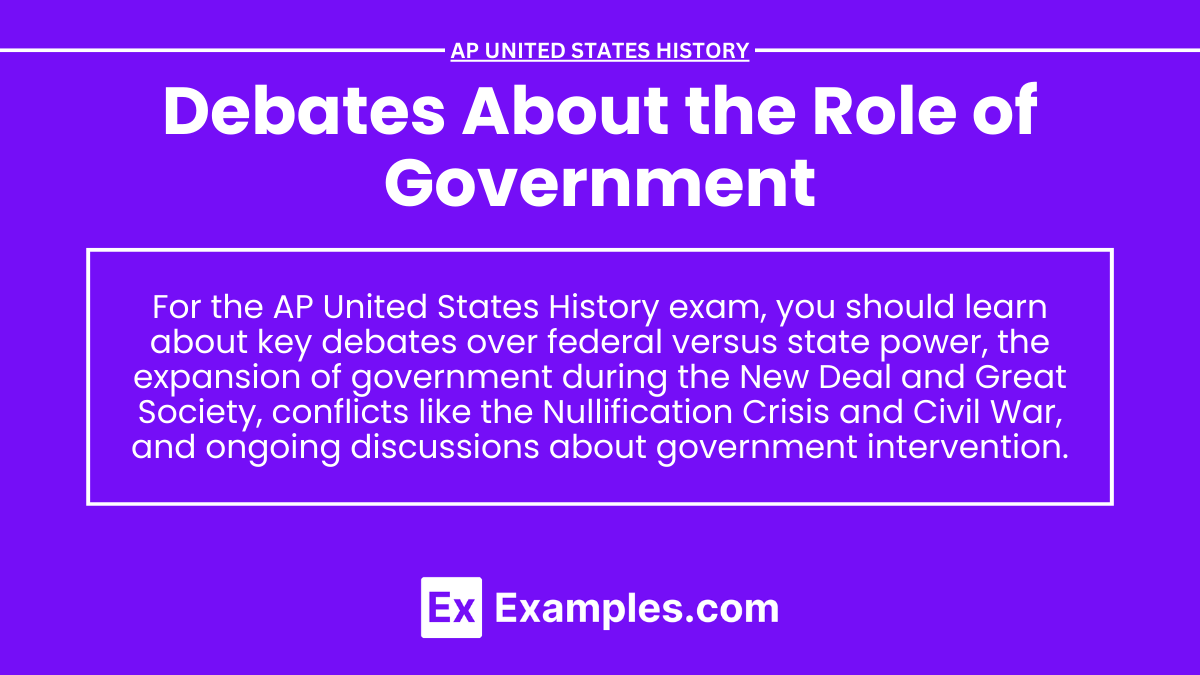In AP United States History, Debates About the Role of Government have been central to the nation’s development, influencing key events and policies. From the Federalists and Anti-Federalists’ disagreements over federal power during the Constitution’s ratification to conflicts over states’ rights leading to the Civil War, and from the expansion of government during the New Deal to modern debates over healthcare and social welfare, these discussions have shaped the balance between federal authority, states’ rights, and individual liberties.
Learning Objectives
The learning objectives for the topic “Debates About the Role of Government” will include the ability to analyze key historical conflicts over federal versus state power, such as the Nullification Crisis and the Civil War. You will be expected to evaluate the impact of significant policies like the New Deal and the Great Society on the expansion of federal authority. Additionally, you will be required to assess how these debates have shaped the balance between government intervention and individual liberties throughout U.S. history.
Key Historical Debates
Federalists vs. Anti-Federalists
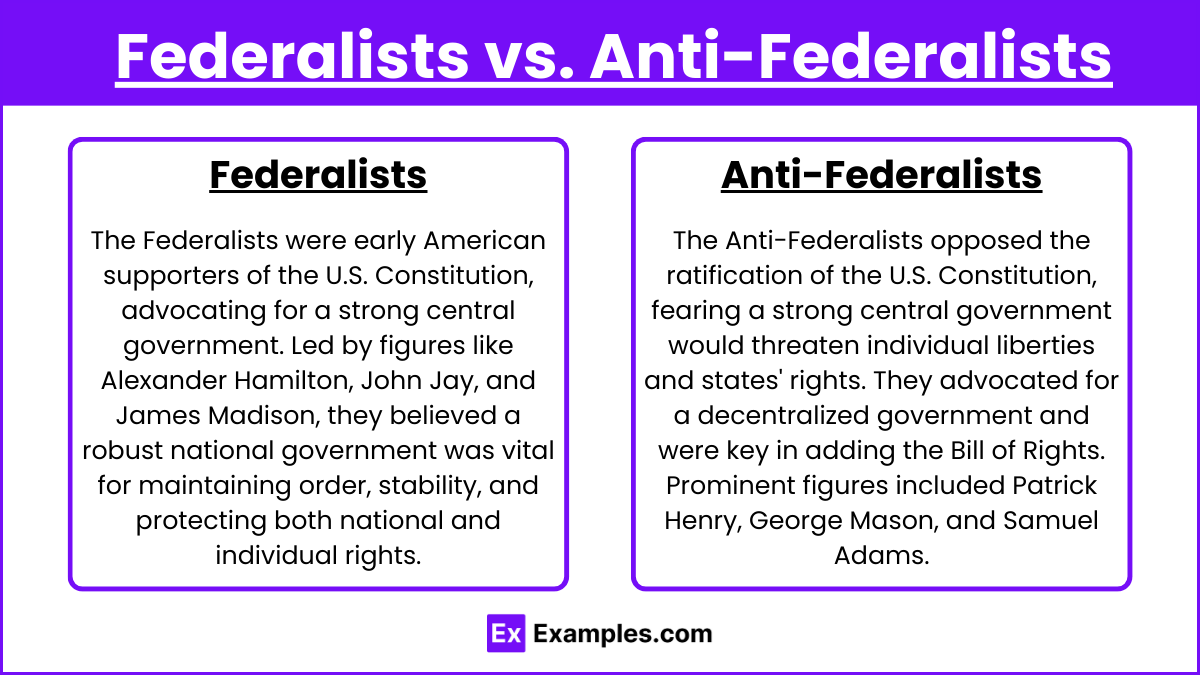
During the ratification of the U.S. Constitution, Federalists, led by Alexander Hamilton and James Madison, supported a strong central government to ensure national stability and economic growth. Anti-Federalists, like Patrick Henry and George Mason, opposed this, fearing that a powerful federal government would infringe on states’ rights and individual liberties. The Bill of Rights was added to the Constitution to address these concerns.
Nullification Crisis (1832-1833)
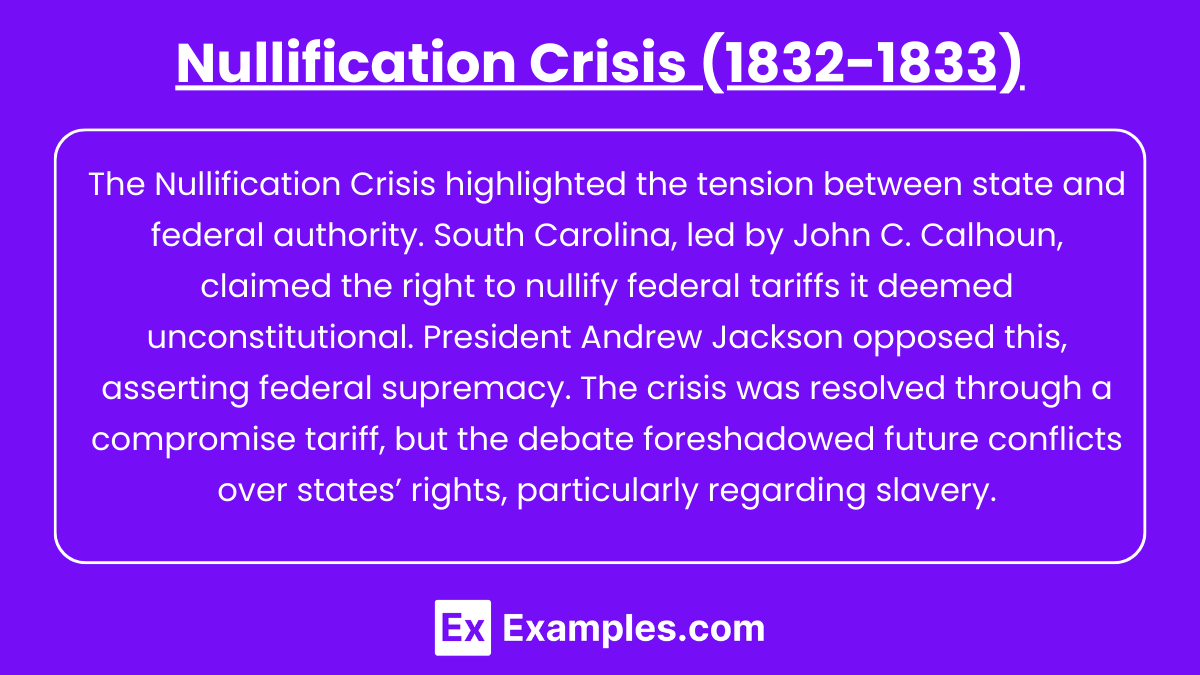
The Nullification Crisis highlighted the tension between state and federal authority. South Carolina, led by John C. Calhoun, claimed the right to nullify federal tariffs it deemed unconstitutional. President Andrew Jackson opposed this, asserting federal supremacy. The crisis was resolved through a compromise tariff, but the debate foreshadowed future conflicts over states’ rights, particularly regarding slavery.
The Civil War and Reconstruction
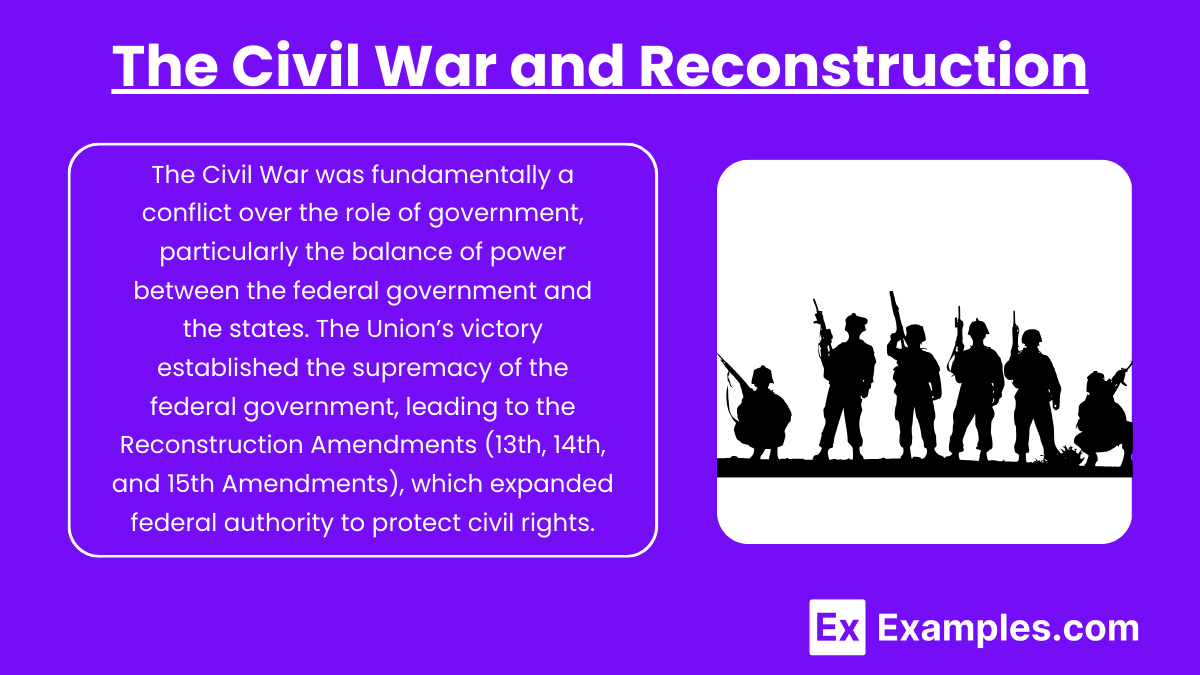
The Civil War was fundamentally a conflict over the role of government, particularly the balance of power between the federal government and the states. The Union’s victory established the supremacy of the federal government, leading to the Reconstruction Amendments (13th, 14th, and 15th Amendments), which expanded federal authority to protect civil rights.
The New Deal
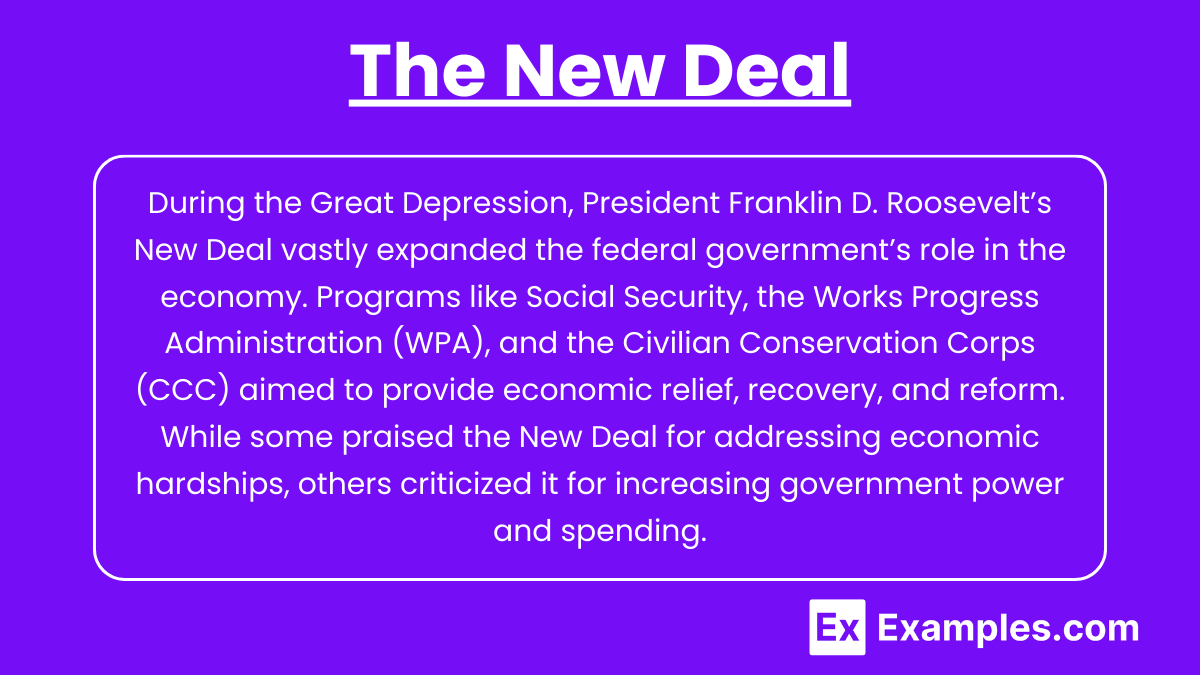
During the Great Depression, President Franklin D. Roosevelt’s New Deal vastly expanded the federal government’s role in the economy. Programs like Social Security, the Works Progress Administration (WPA), and the Civilian Conservation Corps (CCC) aimed to provide economic relief, recovery, and reform. While some praised the New Deal for addressing economic hardships, others criticized it for increasing government power and spending.
The Great Society and Modern Debates
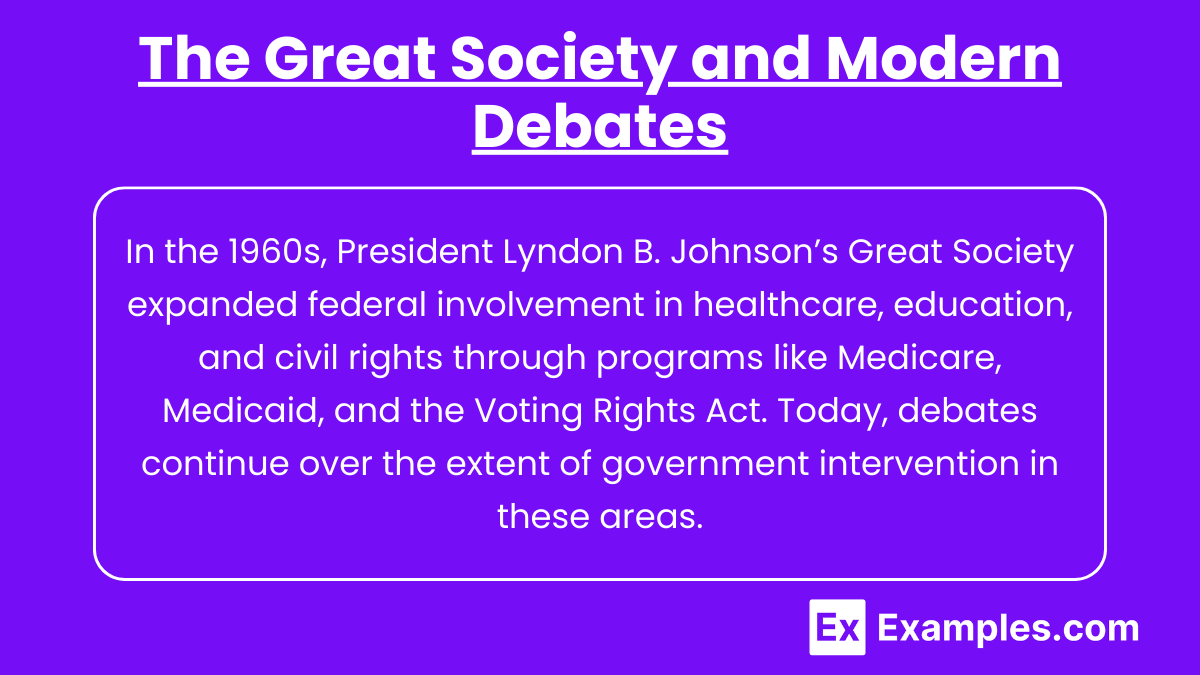
In the 1960s, President Lyndon B. Johnson’s Great Society programs further expanded the federal government’s role in areas such as healthcare, education, and civil rights. Programs like Medicare, Medicaid, and the Voting Rights Act sought to address poverty and racial injustice. In modern times, debates continue over the role of government in healthcare, social welfare, and economic regulation, with differing views on how much government intervention is necessary or desirable.
Examples:
- The Bill of Rights (1791): Added to the Constitution to protect individual liberties and address Anti-Federalist concerns about federal power.
- The Civil War (1861-1865): Established the federal government’s authority over states, particularly concerning slavery and civil rights.
- The New Deal (1930s): Expanded federal intervention in the economy to combat the Great Depression, leading to lasting programs like Social Security.
- The Great Society (1960s): Expanded federal programs to address poverty and inequality, introducing Medicare, Medicaid, and civil rights protections.
- The Affordable Care Act (2010): A modern example of expanded federal involvement in healthcare, sparking debates about government’s role in personal and economic decisions.
MCQs:
- Which historical event was a direct conflict over the balance of power between state and federal governments?
- A) The Monroe Doctrine
- B) The Nullification Crisis
- C) The Louisiana Purchase
- D) The Trail of Tears
- Answer: B) The Nullification Crisis
- Explanation: The Nullification Crisis (1832-1833) involved South Carolina’s attempt to nullify federal tariffs, highlighting the tension between state and federal authority.
- What was a major impact of the New Deal on the role of government in the United States?
- A) Decreased federal intervention in the economy
- B) Expanded federal programs for economic relief and recovery
- C) Reduced the size of the federal government
- D) Strengthened state governments over the federal government
- Answer: B) Expanded federal programs for economic relief and recovery
- Explanation: The New Deal expanded the federal government’s role in the economy through programs aimed at providing relief, recovery, and reform during the Great Depression.
- Which president’s administration is most associated with the Great Society programs that expanded the federal government’s role in addressing poverty and racial injustice?
- A) Franklin D. Roosevelt
- B) Theodore Roosevelt
- C) Lyndon B. Johnson
- D) Woodrow Wilson
- Answer: C) Lyndon B. Johnson
- Explanation: President Lyndon B. Johnson’s Great Society programs in the 1960s expanded the federal government’s role in healthcare, education, and civil rights.

